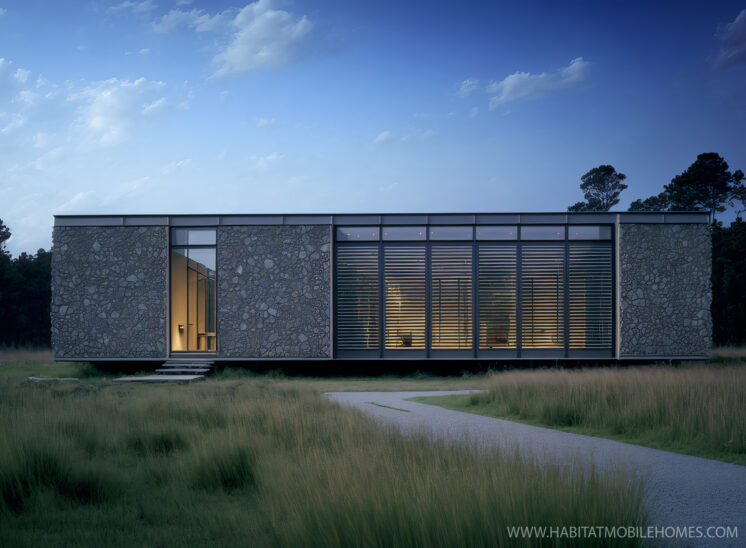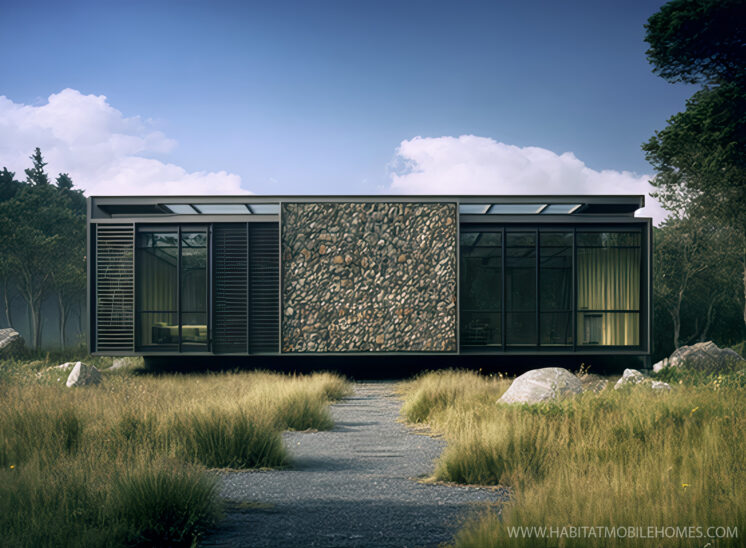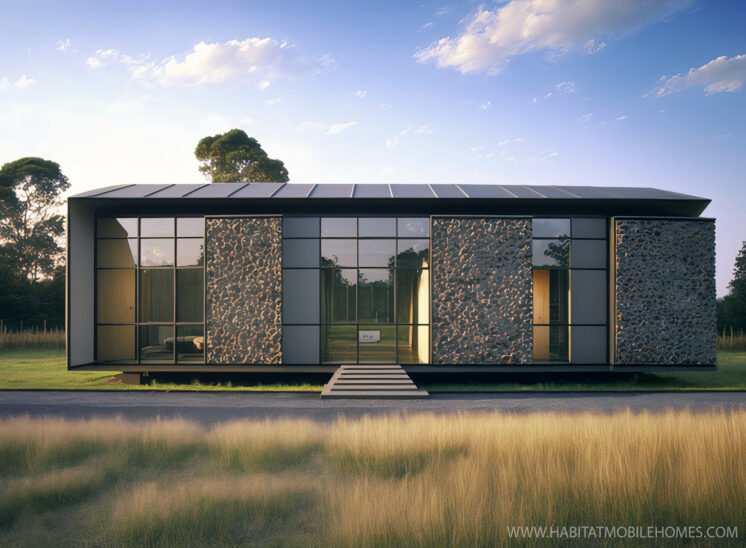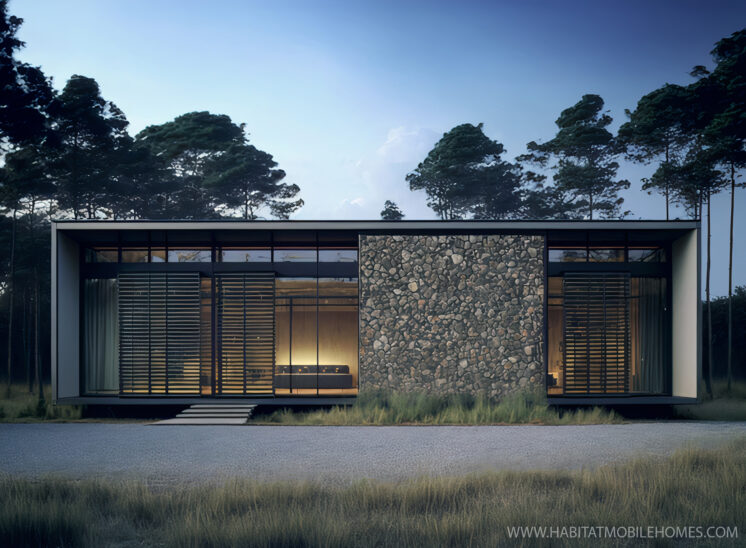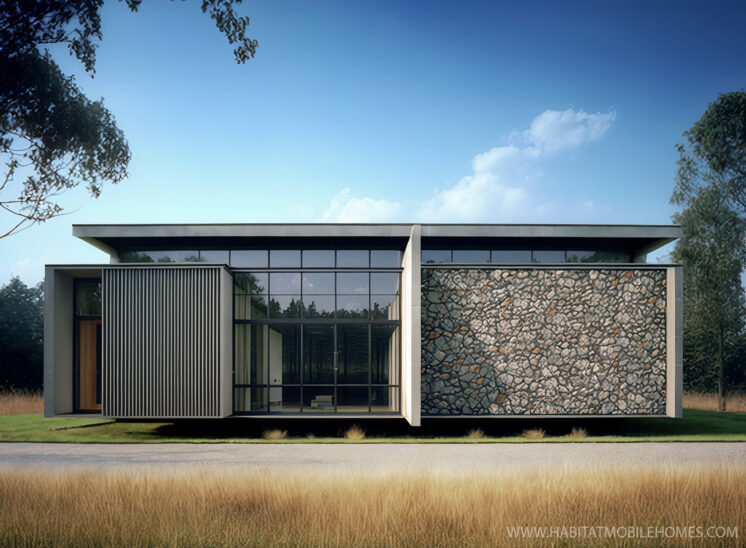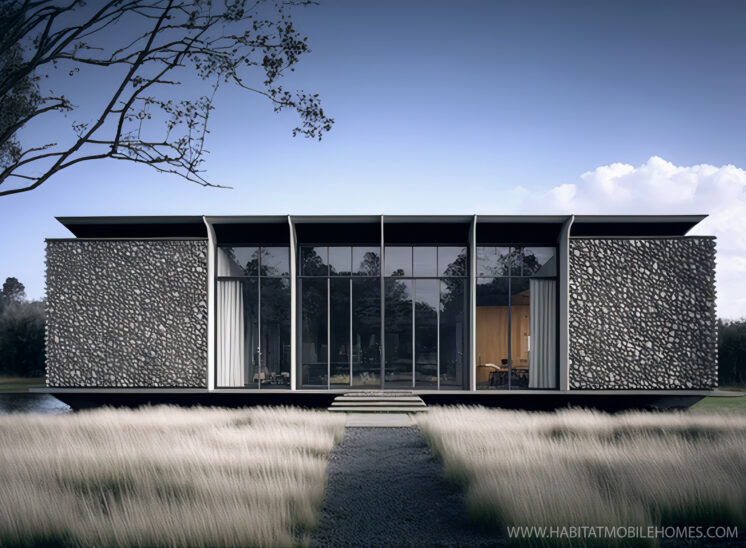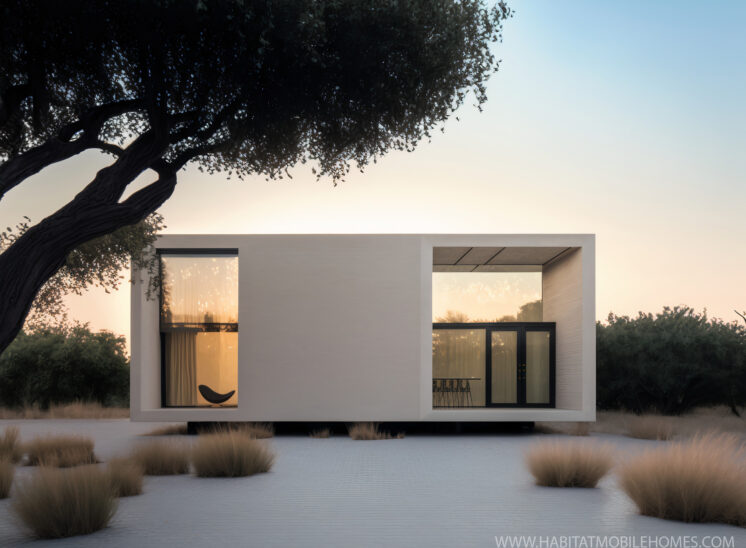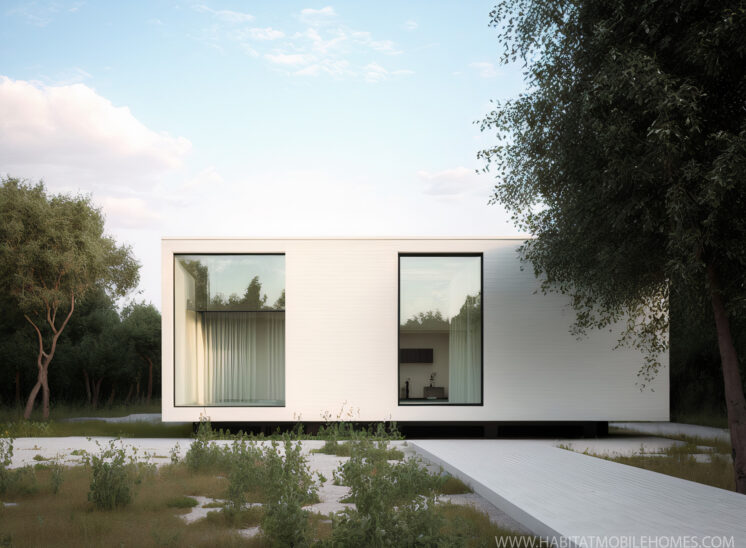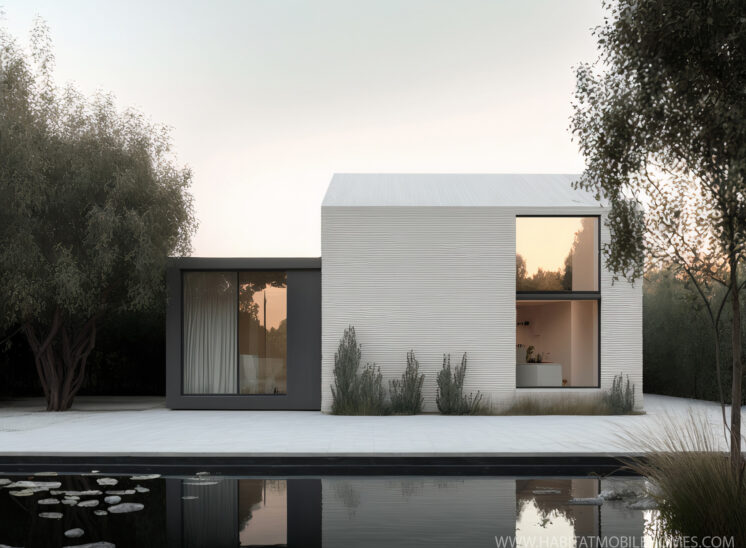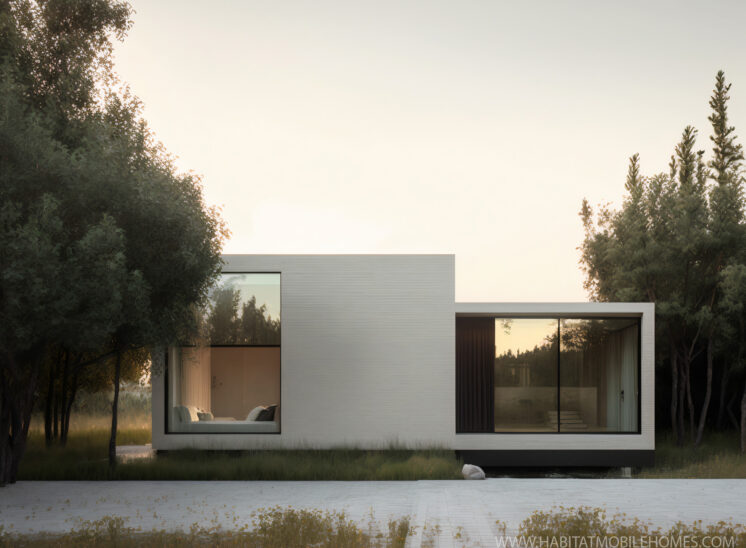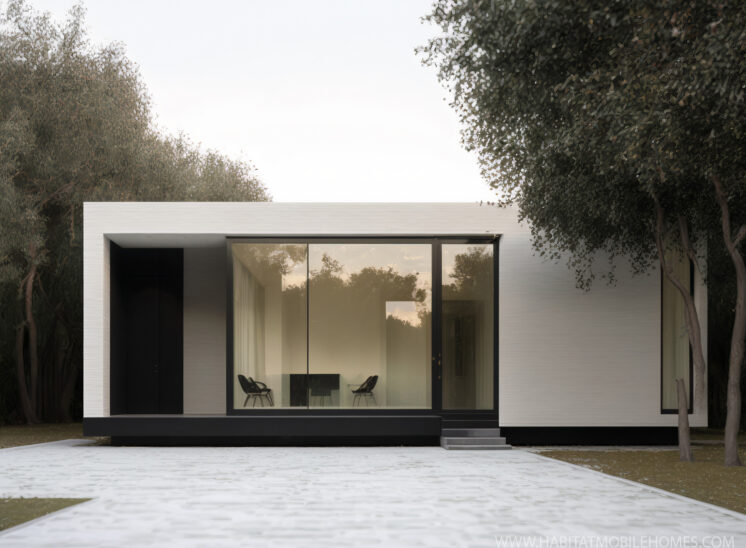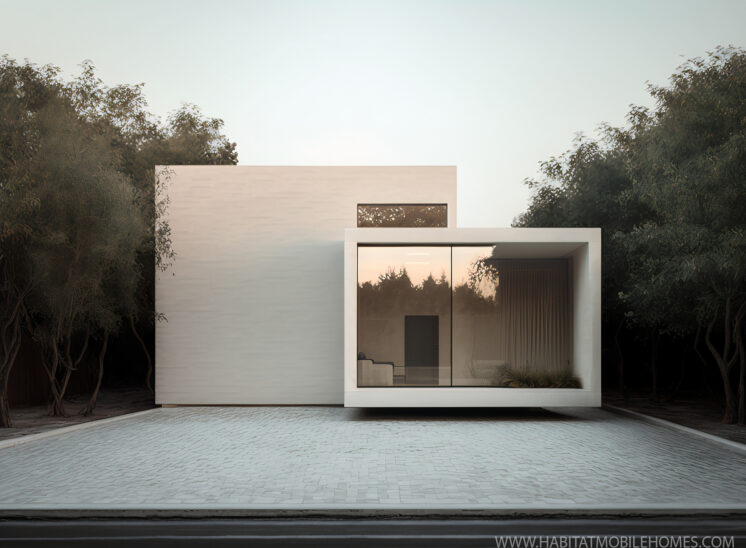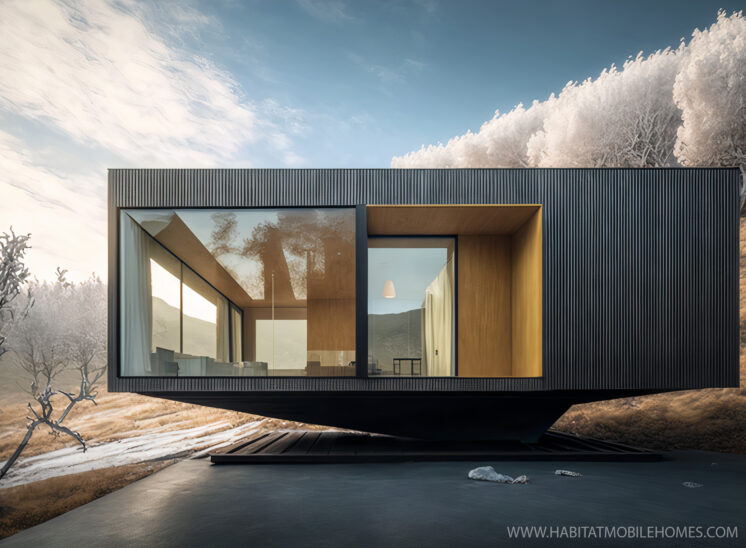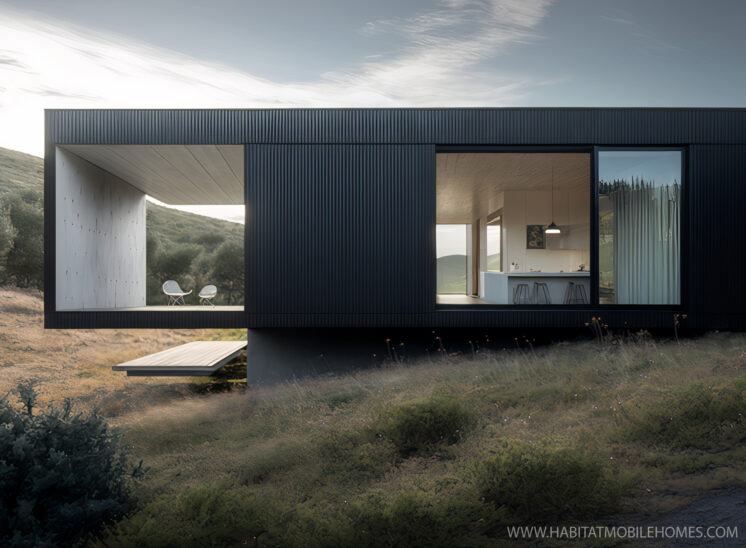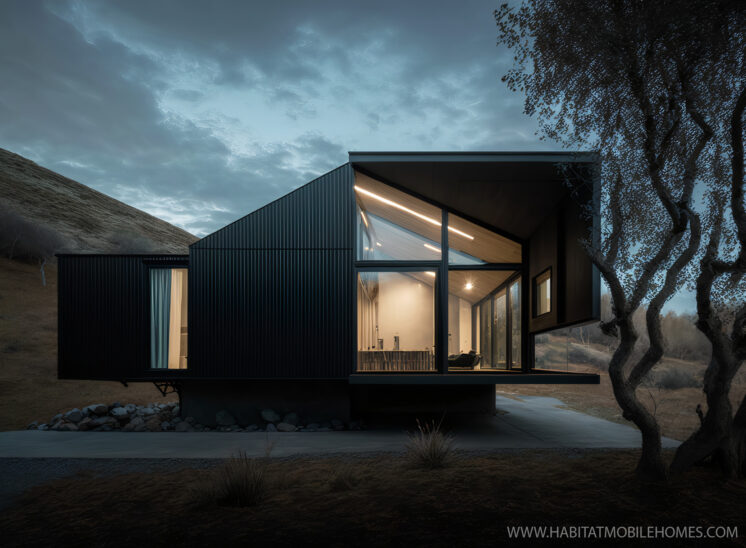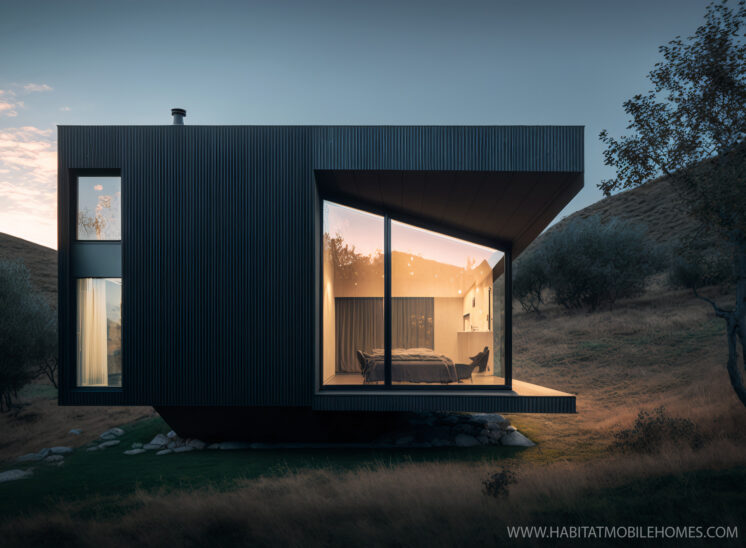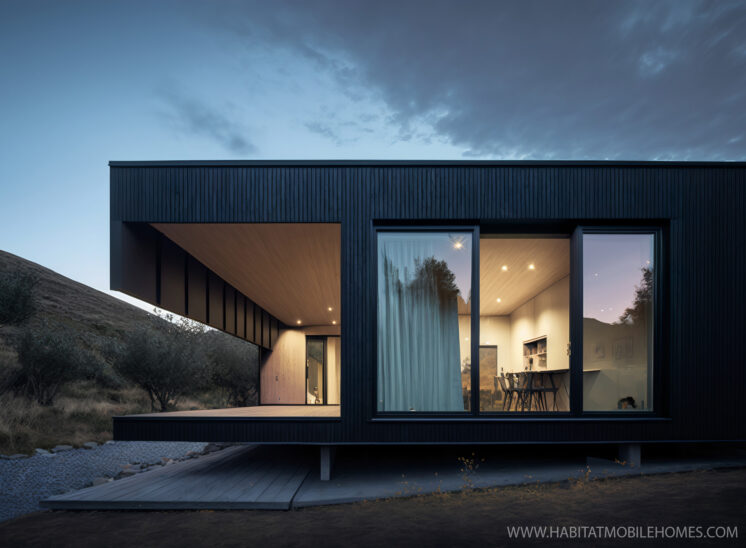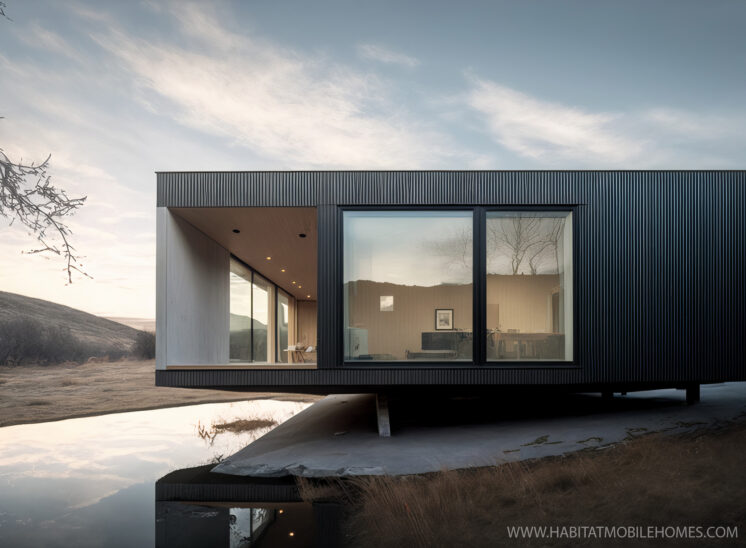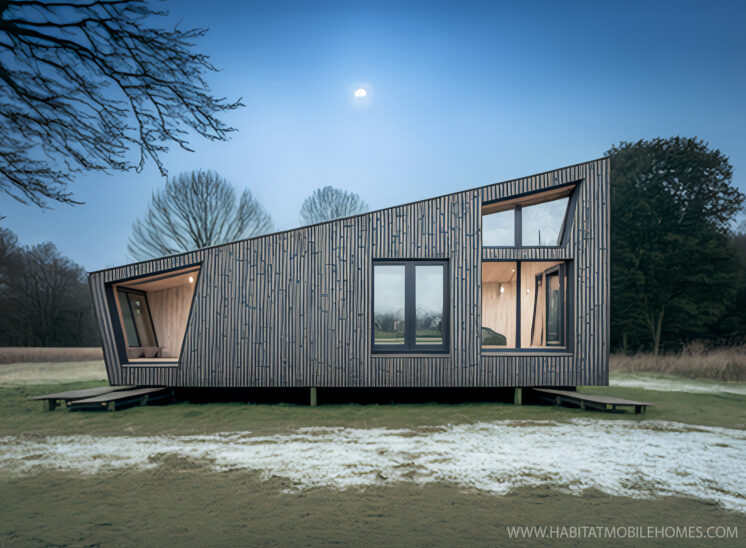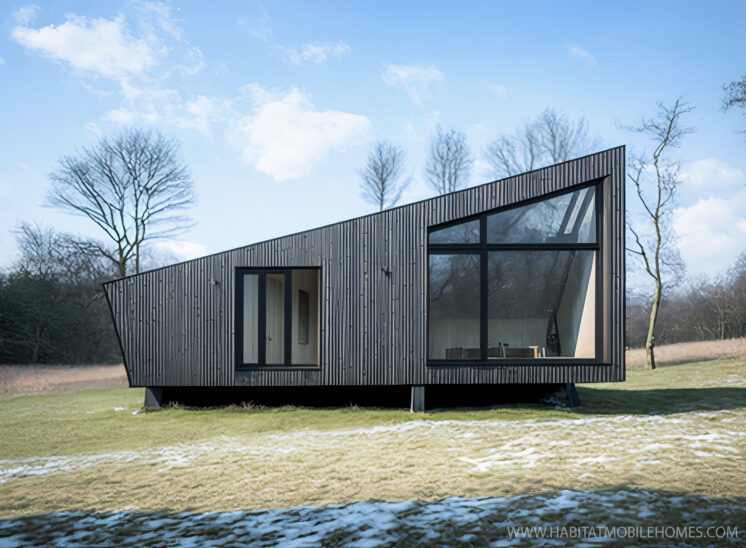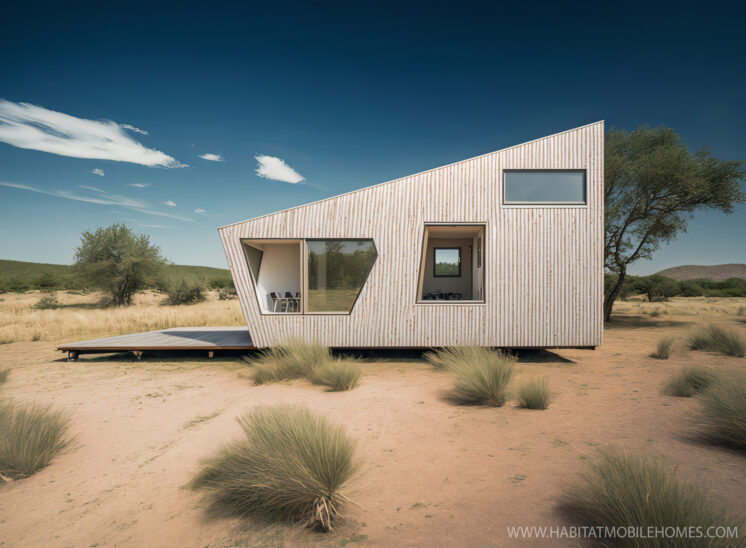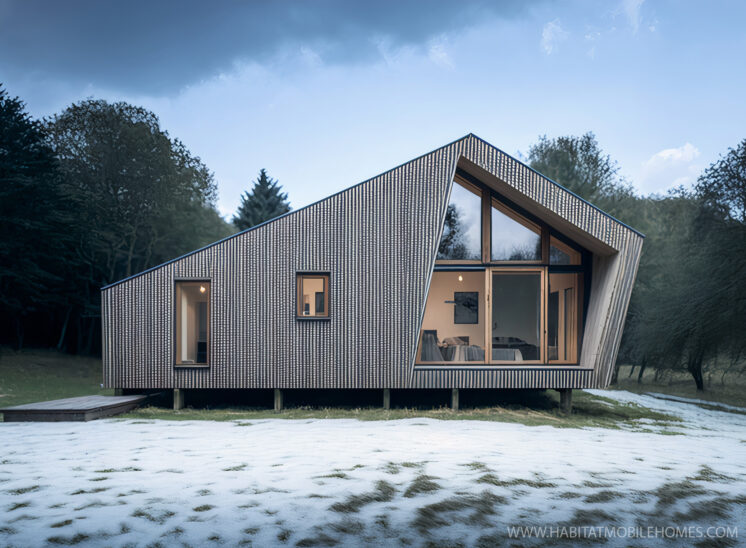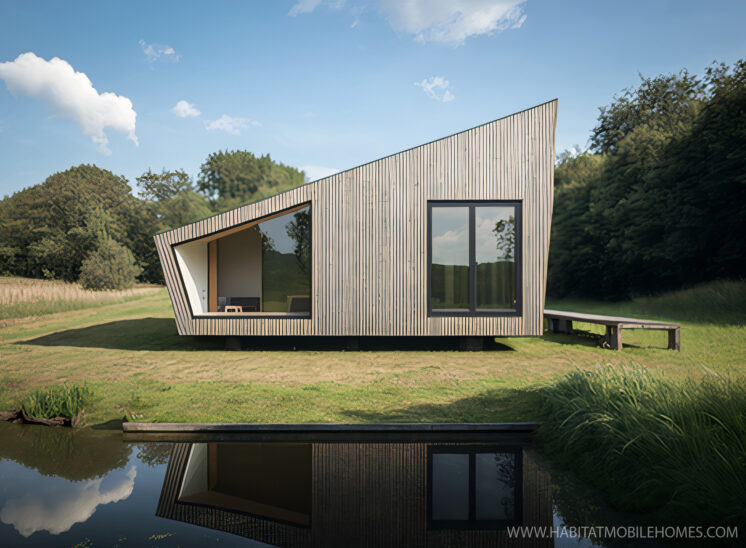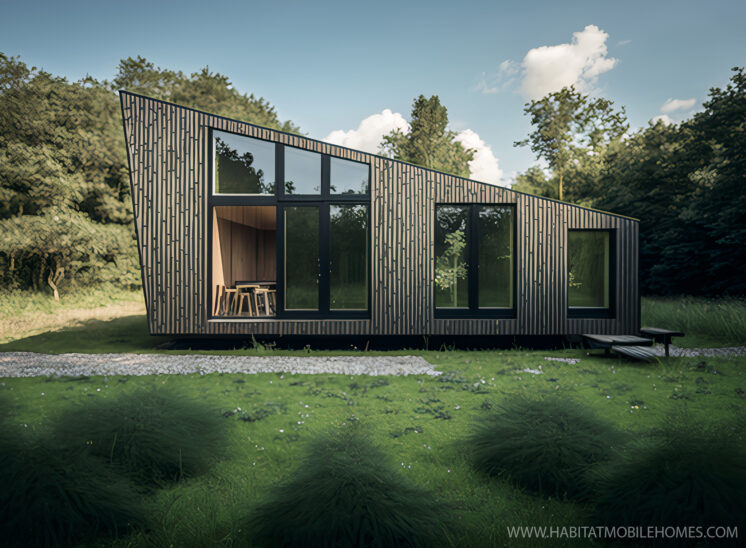We build Mobile Homes with the same materials, wall thicknesses, insulation and internal finishes as a normal new-build residential house, whist still conforming to the definition of a Mobile Home / Caravan, making them probably the best quality mobile homes available. These buildings have a lifespan of well over 100years. They're not like most commercial park homes and static caravans that depreciate and deteriorate at a much quicker rate or the imported log cabins. The walls are 150mm thick, just like a new-build house, and fully insulated. Our interiors are plaster-boarded and finished like conventional homes, giving the clean, solid interior and modern feel that most commercially manufactured caravans lack.
Our chassis are made of super thick timber beams instead of the metal chassis with wheels that most caravans have, this gives less movement and a greater structural integrity, it feels more solid under the foot, it also allows the building to sit much lower to the base. The tow-bar and wheels are detachable. When finished these mobile homes don't look any different from a regular building, both inside and out.
What we do..
- Bespoke Floor Plan and Design.
Deliver and Erect the Structure, On-site, In Two Divisible Sections.
Fit Windows, Cladding, Roof Tiles and All External Works.
All Insulation, Plasterboard and Internal Carpentry.
All Plumbing and Electrics.
Fitted Kitchen, Bathrooms, Decoration to your style.
Kit Builds Always Include Delivery and Erection of the Structure and External Finish.
What are Mobile Homes? General Definition…
Mobile Home refers to any building that has been deigned and constructed to be transportable by road in one or two sections. Once assembled you must be able to move the building around site in one section and the structure must also remain divisible for road transport in no more than two sections. Mobile Homes are no larger than 20 x 6.8m (that's 65 x 23FT) with an internal maximum height of 305cms. Legally mobile homes can still be defined as 'Caravans'.
Different types. Static Caravans and Twin Unit Homehomes…
Mobile Homes fall into two general categories, single units or static caravans and twin-units or park-homes. Static caravans are no wider than 14ft, allowing them to transported in one complete section. Twin-Units are transported in two halves which are bolted together on-site and remain divisible.
Can Mobile Homes be built on-site?
Most mobile Homes and static caravans are made in a factory and delivered fully finished to site in one or two halves. However, they don’t have to be made in factories. Single units or static caravans can be built on-site usually with no restriction but the Caravans Act was modified in 1968 to bring in new laws about ‘twin-unit’ mobile homes. It states these must be composed of no more than two sections separately constructed and assembled by means of bolts and clamps. The law can be interpreted as allowing twin unit mobile homes to be constructed on site but they must be built in two completely separate sections and the ‘last act’ of building would be to join the sections together with bolts and clams.
In 1997 an Appeal Decision by an Inspector appointed for the Secretary of State for Transport, Local Government and the Regions was made with regards to building twin unit mobile homes on-site (Ref: APP/N1025/C/01/1074589) "Though the Park Home was delivered by lorry in many pieces, I see no requirement in section 13(1)(a) of the Caravans Act that the process of creating two separate sections must take place away from the site on which they are then joined together. It is necessary only that the act of joining the two sections together should be the final act of assembly."
Current Legal Definition of a Caravan
Section 29 (1) of the Caravan Sites and Control of Development Act 1960 defined a caravan as:
“… Any structure designed or adapted for human habitation which is capable of being moved from one place to another (whether being towed, or by being transported on a motor vehicle or trailer) and any mother vehicle so designed or adapted but does not include
(A) Any railway rolling stock which is for the time being on rails forming part of a system, or
(B) Any tent”
This definition has been modified be section 13 (1) of the Caravan Sites Act 1968, which deals with twin-unit caravans. Section 13 (1) provides that:
“A structure designed or adapted for human habitation which:
(A) Is composed of not more than two sections separately constructed and designed to be assembled on a site by means of bolts, clamps and other devices; and
(B) Is, when assembled, physically capable of being moved by road from one place to another (whether being towed, or by being transported on a motor vehicle or trailer), shall not be treated as not being (or have been) a caravan within the means of Part 1 of the Caravan Sites Control of Development Act 1960 by reason only that it cannot lawfully be moved on a highway when assembled”.
Amendment of the definition of caravan in article 3 of the Social Landlords (Permissible Additional Purposes) (England) Order 2006[4]
Paragraph 3 of article 3 of the Social Landlords (Permissible Additional Purposes) (England) Order 2006 (meaning of caravan) shall be amended
(a) Length (exclusive of any drawbar) 20m (65.6FT)
(b) Width: 6.8m (22.3ft)
(c) Overall height (measured internally from the floor at the lowest level to the ceiling at the highest level) 3.05m (10ft)
Planning Permission For Caravans and Mobile Homes in the Garden
A caravan may be parked temporarily (in the same manner as a car) within the curtilage of a domestic property without the need for planning permission, unless there are limiting conditions applied when the house was built and/or sited in a Conservation Area. A caravan may also be used in a manner ancillary to the residential property; that is, in addition to the use of the house, but not as someone's separate dwelling. You can use a caravan as, say, a granny annex, but it must not become someone's "only or main residence". There must remain a relationship between the caravan and the house, so, for example, meals could be taken in the house. Use the caravan simply in the manner of an extra room / bedroom. The usage of the caravan must be 'incidental' i.e. accompanying the use, of the main dwelling house. In these cases you will not need planning permission. In cases where the caravan is to be sited outside of the 'domestic grounds' of the dwelling house or the use is not incidental you will need to contact the Council for a 'Certificate of Lawful Use of a Caravan'.
Redefining Mobile Homes: A New Era of Quality and Comfort
Mobile homes have come a long way from their traditional image of being cramped, poorly insulated, and lacking in style. As the market evolves, there is a growing demand for high-quality mobile homes that offer the same level of comfort, insulation, and interior finish as a regular new-build house. This article will explore a new generation of mobile homes that stand out from the crowd, offering unparalleled quality and design while adhering to the legal definition of a mobile home or caravan.
A New Standard in Mobile Home Quality
These exceptional mobile homes are constructed using the same materials, wall thicknesses, insulation, and internal finishes found in a new-build residential house. With a lifespan of well over 100 years, these mobile homes surpass most commercial park homes, static caravans, and imported log cabins, which tend to depreciate and deteriorate at a much faster rate.
Featuring 150mm-thick walls, these mobile homes are fully insulated and plaster-boarded, providing a clean, solid, and modern interior that most commercially manufactured caravans lack. The chassis are constructed with super-thick timber beams instead of the conventional metal chassis with wheels, offering greater structural integrity and reduced movement. When completed, these mobile homes are indistinguishable from a regular building, both inside and out.
Customisable Mobile Home Services
A range of services are available to help you create your perfect mobile home:
- Bespoke floor plans and designs
- Delivery and erection of the structure on-site in two divisible sections
- Installation of windows, cladding, roof tiles, and other external works
- Insulation, plasterboard, and internal carpentry
- Plumbing and electrical work
- Fitted kitchens, bathrooms, and personalised decoration
Understanding Mobile Home Definitions and Regulations
Mobile homes are defined as any building designed and constructed to be transportable by road in one or two sections. They must be able to move around the site in one section and remain divisible for road transport in no more than two sections. Legally, mobile homes can still be classified as 'caravans'.
There are two main types of mobile homes: single units (static caravans) and twin-units (park homes). Single units can be built on-site with no restriction, while twin-unit mobile homes must be constructed in two separate sections and joined together using bolts and clamps.
Mobile homes and static caravans are typically manufactured in a factory and delivered fully finished to the site in one or two halves. However, they can also be constructed on-site as long as they comply with the Caravans Act and other relevant regulations.
Planning Permission for Mobile Homes
Planning permission is not required for a caravan parked temporarily within the curtilage of a domestic property, unless there are limiting conditions or the property is located in a Conservation Area. Caravans may be used as an ancillary space to the main house, but not as someone's separate dwelling. Using a caravan as a granny annex or an additional bedroom is generally permissible without planning permission. However, if the caravan is to be sited outside the domestic grounds of the main house or the usage is not incidental, you will need to contact the local council for a 'Certificate of Lawful Use of a Caravan'.
With innovative designs and construction methods, a new generation of mobile homes is redefining quality and comfort in the market. These exceptional mobile homes offer a unique and cost-effective solution for those seeking a high-quality living space that doesn't compromise on style, insulation, or longevity.
Do I Need Planning Permission to Have a Mobile Home Caravan in My Garden?
Mobile homes and caravans are a popular choice for many homeowners seeking to create additional living space, an office, or even a granny annex on their property. However, the prospect of navigating planning permission rules can be daunting. This article will explore the conditions under which planning permission is not required for placing a mobile home or caravan in your garden, making the process as smooth and hassle-free as possible.
When Planning Permission is Not Required
In many cases, you do not need planning permission to place a mobile home or caravan in your garden, provided the following conditions are met:
- The caravan is parked temporarily within the curtilage of a domestic property, similar to parking a car. This is not applicable if there are limiting conditions imposed when the house was built or if the property is located in a Conservation Area.
- The caravan is used as an ancillary space to the main house, but not as someone's separate dwelling. For example, you can use the caravan as a granny annex, an additional bedroom, or an office, but it must not become someone's "only or main residence."
- There must be a relationship between the caravan and the house. This means that the caravan should be used in a manner that complements the main house, such as sharing meals or other facilities.
- The usage of the caravan must be 'incidental' to the main dwelling, meaning it should accompany the use of the main house.
If these conditions are met, you do not need planning permission to place a mobile home or caravan in your garden.
When Planning Permission May Be Required
In certain cases, planning permission may be necessary for placing a mobile home or caravan in your garden. This typically occurs when:
- The caravan is sited outside the domestic grounds of the main house.
- The usage of the caravan is not incidental to the main house.
In these situations, you will need to contact your local council for a 'Certificate of Lawful Use of a Caravan' to ensure compliance with planning regulations.
Understanding the Legal Definition of a Caravan
It is crucial to understand the legal definition of a caravan, as this can impact whether planning permission is required. A caravan is defined as any structure designed or adapted for human habitation that is capable of being moved from one place to another, either by being towed or transported on a motor vehicle or trailer. Mobile homes and caravans must adhere to specific size limitations and other regulations to maintain their classification as a caravan.
Placing a mobile home or caravan in your garden can be an excellent solution for creating additional living space without the need for extensive construction or planning permission. By understanding the conditions under which planning permission is not required and ensuring your mobile home or caravan adheres to the legal definition, you can enjoy the benefits of this flexible and cost-effective solution with minimal hassle.

